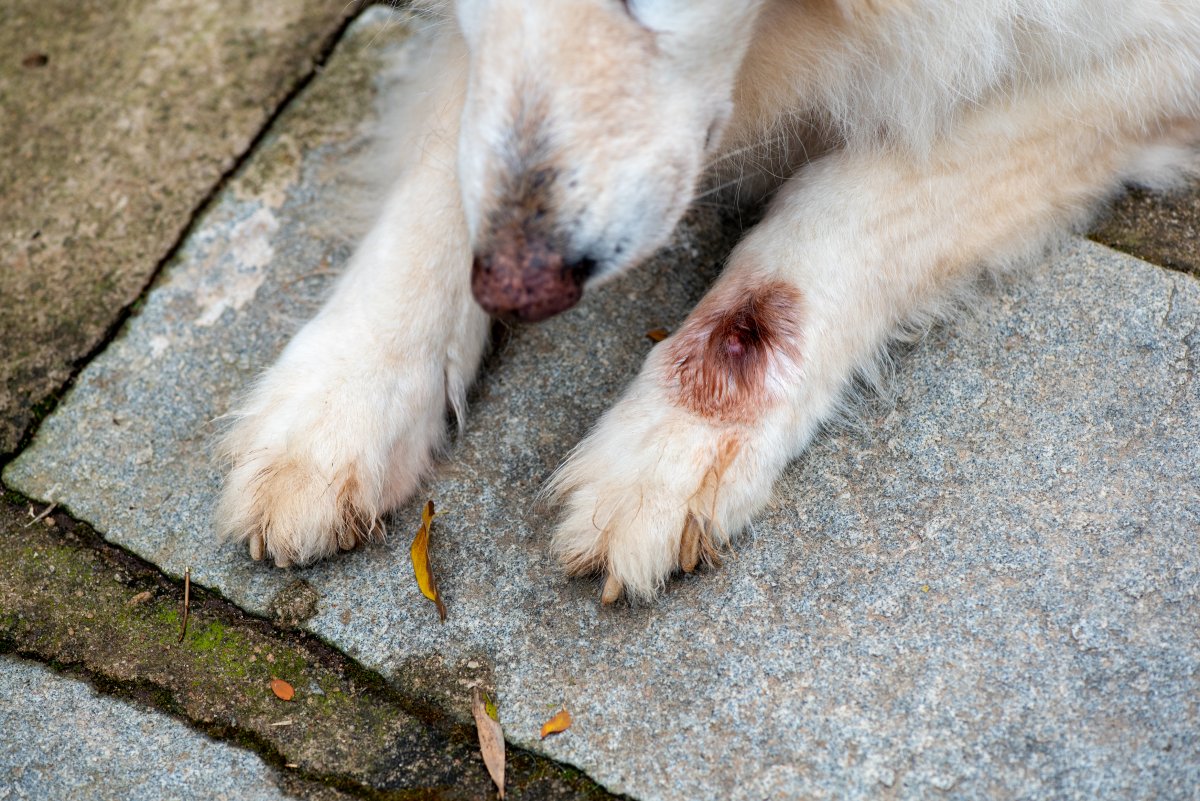A dog owner has racked up over 36 million views after showing her at-home removal process of a botfly larva that burrowed into her 14-year-old Yorkshire Terrier.
Most of Christina Curtis-Bon's TikTok content features funny videos of her large Cane Corso dogs at her West Virginia home, but this one was far less easy to watch.
"We have discovered that our little dog Rocco has a botfly in him," she began the video. The camera zoomed in on a hole in the dog's skin, showing something moving slightly inside. "We're going to take this out right now," she said.
They applied a generous amount of petroleum jelly to the skin, leaving no air able to enter the hole made by the botfly larvae. "I am going to suffocate him," she explained. In theory, the Vaseline should block the air, meaning the fly needs to leave the hole to breathe, allowing the owner to then grab and remove it easily.
In gruesome scenes, the maggot began to bob in and out of the dog's skin. When it reached far enough out, after more petroleum jelly was added, they grabbed the maggot with tweezers and pulled it, earning a shriek from the dog.
The process was successful and the maggot was left wriggling on the table, as a clearly grossed out family member said, "ew."
The video can also be seen in full here.
@lacosanostracanecorsollc We discovered a Botfly on our 14 yr.old Yorkie. “WARNING” removing it was gross! #lacosanostracanecorso #fyp #fypシ #botflyremoval
♬ original sound - Christina Curtis-Bon
After the removal, a gaping hole was left in Rocco's skin, but it soon cleared up, as updated by Curtis-Bon. In a video just the next day, she said: "He is doing perfectly fine."
"His little hole is closed up," she said, adding that they will be taking him to a vet. "But so far, he seems great. He is eating well, he hasn't been licking at the spot, he actually played a little."
Rocco's experience with the botfly larvae is unpleasant but far from uncommon, with dogs finding themselves in the situation around late summer and fall.
According to PetMD, botflies lay their eggs on blades of grass or in nests, where they hatch and release maggots that crawl onto passing hosts. Dogs are likely to come into contact with them when sniffing grass or rabbit and rodent nests, which the larvae tend to infect.
"The dog's movement against the blade of grass stimulates the maggot to crawl onto the dog. The maggot then crawls around on the dog until it finds an orifice in which to enter," they reported.
"The small maggots enter a body orifice, migrate through various internal tissues, and ultimately make their way to the skin, where they establish themselves within a warble (a small lump in the skin)."
Most of the time, the infection is not noticed until the maggot enlarges and causes swelling that can be seen or felt. Sometimes, nothing is noticed until after the maggot has naturally dropped out of the skin, leaving an empty hole or cyst behind.
It's recommended that any dogs with a botfly infection are taken to a veterinarian who can diagnose and remove it, and treat any other symptoms and issues caused by it.
Newsweek has contacted Christina Curtis-Bon for comment.

Uncommon Knowledge
Newsweek is committed to challenging conventional wisdom and finding connections in the search for common ground.
Newsweek is committed to challenging conventional wisdom and finding connections in the search for common ground.
About the writer
To read how Newsweek uses AI as a newsroom tool, Click here.








